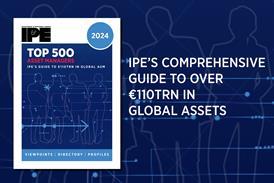Open-ended investment funds face up to the shadow banking dragnet

The debate over the systemic risk of non-bank financial institutions (NBFIs) – sometimes called shadow banks – is a recurrent theme but it has recently moved to the forefront thanks to tighter monetary policies, geopolitical risks and factors such as the UK’s LDI crisis. While regulators are assessing the threats posed, most market participants believe changes will not happen for years. For some, there are fears that largely unleveraged segments like open-ended investment funds could be unfairly targeted
This content is only available to IPE Members
Already an IPE Member? Sign in here
Unlock your IPE Membership Package
For unlimited access to IPE’s industry-leading market intelligence, comprising news, data and long-form content on European pensions and institutional investment.
What type of organisation do you work for?
- Secure online payment
- Free European delivery
- Best value for price
IPE Membership
IPE has created a suite of products and services for Europe’s institutional investment and pensions community.
Premium content
Pension fund interviews,
country analysis and data
country analysis and data
Opinion and analysis
Asset classes
and strategies in depth
and strategies in depth







